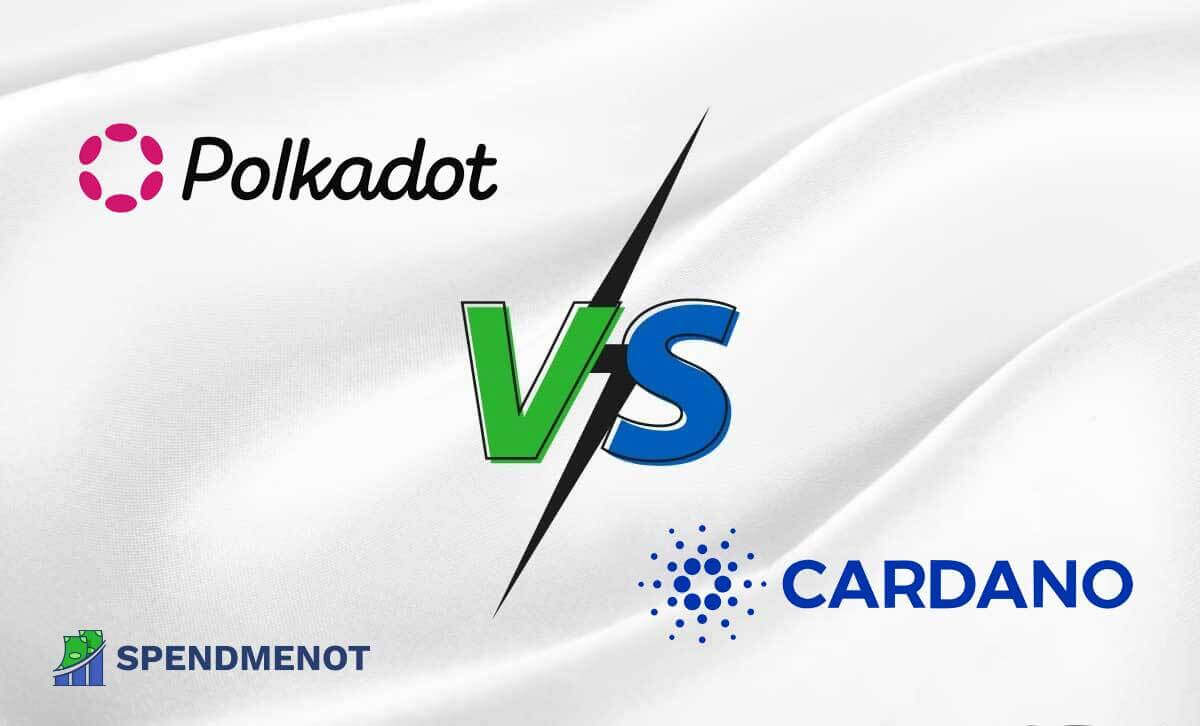Fidelity vs TD Ameritrade
Last Updated: January 12, 2023
Fidelity vs TD Ameritrade: Side by Side Comparison
Fidelity vs TD Ameritrade: Ease of Use and Trading Offerings
Fidelity vs TD Ameritrade: Fees
Security
Education
Robo Advisor
Mobile App
Desktop App
Customer Service
Who Is Fidelity Best For?
Who Is TD Ameritrade Best For?
Which Is Better Fidelity or TD Ameritrade?
Can’t decide between Fidelity vs TD Ameritrade? We’ve got you!
Both of these brokerage firms were ranked among the best online brokers in 2020.
To help you make your choice we’ll look at their offerings, compare trading fees, customer service, financial advisors, mobile apps, and more.
So stay with us!
Fidelity vs TD Ameritrade: Side by Side Comparison
In the table below we’ll look at the most relevant factors when making a comparison between two online brokers.
| Fidelity | TD Ameritrade | |
| Fiduciary: | No | Yes |
| AUM: | $4.9 trillion | $1.32 trillion |
| Account minimum: | $0 to open $10 to trade |
$0 |
| Account management fee | $0 | $0 |
| Account fees (transfer, closing, annual) | $0 | $75 full transfer $0 partial transfer $0 annual fee |
| Human advisor: | Yes | Yes |
| Mobile app: | Yes | Yes |
| Desktop app: | Yes | Yes |
| Robo advisory service: | Yes | Yes |
| SIPC Coverage | Yes | Yes |
| FDIC Coverage | Yes | Yes |
| Trading Fees | $0 | $0 |
| Regulated by | SEC | SEC, FINRA, CFTC |
As you can see, there are certain differences between the brokerages. For example, TD Ameritrade is regulated by more authorities. Also, while they both offer robo advisors, Fidelity doesn’t offer human expert guidance.
Fidelity vs TD Ameritrade: Ease of Use and Trading Offerings
Is Fidelity better than TD Ameritrade?
It’s hard to say considering all the similarities we’ve outlined so far.
So let’s dig deeper into Fidelity’s and TD Ameritrade’s account opening, ease of use, and tradable assets!
Registration on Fidelity and use of the platform
To open a Fidelity brokerage account, you need to be at least 18 years old and a US citizen or resident. On their website, you can find a detailed guide to help with the process.
The required details are very basic and are the same for all types of accounts: investing and trading, custodial, and retirement (including all types of Fidelity IRA accounts). You need to provide personal, contact, and employment information, as well as proof of identity.
While there is a $0 minimum to open the account, you need at least $10 to start trading. You can deposit as much money as you want in your account and there are four different ways to do so: PayPal or Venmo, checks, directly from your bank account, or by wire transfer. If you choose a wire transfer or a direct bank transfer you will have to connect your bank account to your Fidelity account.
So what can you trade? Fidelity offers a wide selection, and here is the list:
- Stocks
- Bonds and certificates of deposit
- Mutual funds
- Exchange-traded funds (ETF)
- Options
- Precious Metals
Currently, Fidelity does not offer futures trading, and retail brokerage customers cannot buy cryptocurrencies. However, if you own cryptocurrency, it can be arranged so that you see your balance.
Fidelity is considered one of the best day trading platforms. If you want to start day trading, there is an additional requirement to have a minimum of $25,000 at all times. This is relatively low for industry standards.
Registration on TD Ameritrade and use of the platform
Setting up a TD Ameritrade brokerage account is easy and straightforward. To sign up you need to provide your personal information, contact, Social Security Number or ITIN, and employer information.
Once your account has been opened, you need to apply for approval to start trading. On the website, you can find a detailed explanation and a step-by-step guide. The approval takes two to three business days.
Once you get approved, it’s time to start trading. TD Ameritrade offers a well-rounded selection of:
- Stocks
- Bonds
- Mutual Funds
- ETFs
- Forex
- Options on futures
- Futures
- Cryptocurrency
Unfortunately, there’s no option to trade precious metals. So if this is something you are set on, consider another platform.
Same as Fidelity, the TD Ameritrade minimum for day trading is $25,000. Again, this is considered on the low side compared to others in the industry.
One downside of this brokerage firm is that with international trading, customers can only trade US and Canadian securities.
Fidelity vs TD Ameritrade: Fees
Thanks to a pricing war in 2019, most brokerage companies, including TD Ameritrade, lowered their prices. Now, the two companies are similar when it comes to fees.
| Fidelity | TD Ameritrade | |
| Minimum deposit | $0 | $0 |
| Stock Trades | $0 | $0 |
| ETF Trades | $0 | $0 |
| Options Trade (base fee) | $0 | $0 |
| Options Trade (per contract) | $0.65 | $0.65 |
| Mutual Fund Trade fees | $49.95 | $49.99 |
| Futures (per contract) | N/A | $2.25 |
| Broker Assisted Trades Fees | $32.95 | $25 |
The biggest difference when comparing Ameritrade vs Fidelity is that the latter doesn’t offer trading of futures. So if this is something you are interested in, TD Ameritrade offers it to you at $2.25 per contract.
Another noticeable difference is that broker-assisted trades come at a slightly steeper price at Fidelity. Aside from this, the trading fees comparison shows that the prices are almost identical.
Security
There are plenty of similarities when you compare Ameritrade vs Fidelity in regards to security.
In line with industry standards, their apps are protected using your biometric data. There is also two-factor authentication, and security text alerts in place. In case of fraudulent or unauthorized activity, there is protection against possible damages. This means that no one can access your account with your data and if a breach happens you have insurance to cover the losses.
In terms of protecting your money, both companies carry SIPC insurance. TD Ameritrade has a policy that provides each client with around $2 million worth of protection on cash and $149.5 million on securities. And Fidelity’s SIPC coverage is $1.9 million per-customer on cash investments, and no limit on securities.
As of 2021, neither Fidelity or TD Ameritrade has experienced any significant security breaches. The last significant data breach for both of these companies was in 2007.
Education
Whether you choose TD Ameritrade or Fidelity, there is no doubt that you will have access to great educational content.
On TD Ameritrade’s website, you can find over 200 educational videos organized into quizzes or courses. In addition, each month there are hundreds of webinars and educational sessions available. Also, there is a reward system set in place to encourage further education. It even has its own magazine called thinkMoney and a blog.
Fidelity also has educational offerings for everyone. Its educational content is organized into roadmaps with progress tracking. You can also sort by experience level, content type, and category. What’s more, Fidelity has its podcast called “In The Money”. You can find thousands of articles, webinars, videos, courses, and infographics to help further education.
So when you compare Ameritrade vs Fidelity, you can see that both of these companies really care and put a lot of effort into further educating their customers.
Robo Advisor
While Fidelity does offer human oversight of your portfolio, it also has an all-encompassing, Robo advisor. Its technology is considered one of the industry’s best, but if you don’t fully trust financial technology, don’t worry. They have a human overseeing the investment decision, so this is more of a hybrid robo advisor. This does come with a management fee of 0.35%.
At TD Ameritrade this option is available through TD Ameritrade Essential Portfolios which charge an annual management fee of 0.30%. There’s also a minimum account requirement of $5,000.
Comparing prices alone, in this Fidelity vs Ameritrade debate the latter has a slight advantage. Plus, the company offers human advisors, if you are not a fan of this financial technology.
Mobile App
Both mobile apps have great reviews by customers. This is because they offer a similar, well-rounded experience. You can use them on both Android and iPhone, and even on your Apple Watch.
TD Ameritrade has two mobile apps: TD Ameritrade Mobile and thinkorswim Mobile app. The first one is more beginner-friendly, while thinkorswim was designed with active traders in mind. They offer a lot of functionality and are very robust. You can set up a watchlist and stock alerts. There are also charting options and real-time data streaming. You can trade pretty much anything, even after hours, with one exception — mutual funds.
Users of Fidelity’s mobile app typically find it easy to use and comprehensive. It has a lot of similar features to TD Ameritrades’ Mobile apps. When it comes to trading in the app, the only exclusions are rolling options and conditional orders. In the Fidelity app, you can set up watchlists and heatmaps, stock alerts, and stream real-time data. However, you can’t draw charts or do a barcode lookup like in TD Ameritrade Mobile.
Desktop App
Desktop apps are available by both brokerages for all operating systems. In the event that you don’t want a desktop app, they also offer web apps.
On both platforms, you will find features for day trading like alerts and live streaming. There also are charting features like automated analysis, historical trades, corporate events, etc. There is one exception when it comes to TD Ameritrade vs Fidelity desktop platforms and that is the fact that Fidelity doesn’t offer paper trades.
Customers have rated both platforms with five stars. They are both considered to be all-encompassing, and easy to use for both beginners and advanced investors.
Customer Service
Both of these brokerage companies have almost flawless customer service. They offer 24/7 support on multiple platforms. You can reach both TD Ameritrade and Fidelity over the phone as they have lines for both current and prospective customers. Email support and live chat are also available on their websites. Despite this, there are slight differences between Ameritrade vs Fidelity customer support.
For Fidelity, the phone line is 24/7 but the chat feature has limited hours. Yet, you can use their Virtual Assistant and FAQ page, too. They are quite extensive, as confirmed by customers.
TD Ameritrade, on the other hand, even has a service for hearing impaired clients that is available from 8:30 a.m. to 5:30 a.m. ET. Also, if you need support in Chinese or Spanish, there is assistance available during working hours Monday-Friday. You can also use chatbots on WeChat, Twitter, Facebook Messenger, and Apple Business Chat.
Who Is Fidelity Best For?
Fidelity is a great option for retirement investors because of its wide offer of retirement accounts. This includes various accounts for IRA and 401(k). Active traders will also enjoy Fidelity due to features designed for them on its platforms.
Fidelity trading fees for stocks, ETFs, and options are $0. This makes the platform a suitable choice for novice investors. Also, if you’re new to trading or you’re seeking to expand your knowledge, you’d find the educational content available very useful.
Who Is TD Ameritrade Best For?
TD Ameritrade is described as the best trading platform for beginners. This is because their mobile app is specifically designed with beginner investors in mind. On the other hand, advanced active traders will enjoy its thinkorswim Mobile app.
Its commission is low or non-existent for almost all available assets. Also, the educational resource is one of TD Ameritrade’s strongest selling points.
Which Is Better Fidelity or TD Ameritrade?
Like mentioned before, both of these companies were ranked as one of the best in 2020. Deciding between the two is really down to personal preference.
You can go off the slight difference in their trading offerings or the fact that Fidelity doesn’t offer a human advisor, only human oversight on investment decisions.
Retirement investors might find Fidelity a better option, while beginner investors could prefer TD Ameritrade.
Whatever the case may be when you way out the differences between Fidelity vs TD Ameritrade, know for a fact that you are choosing between the very best.










